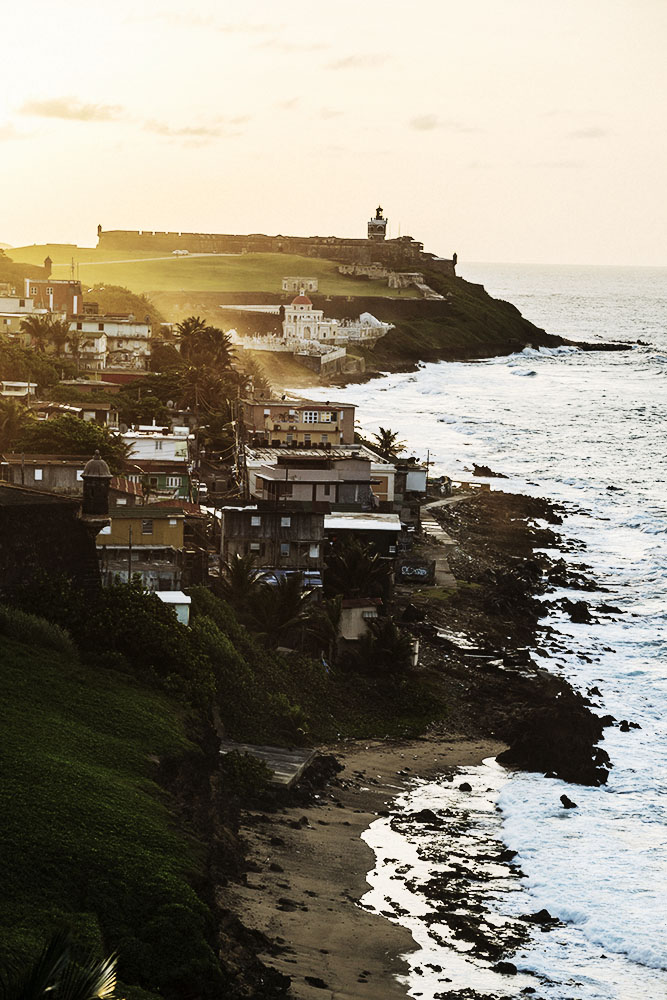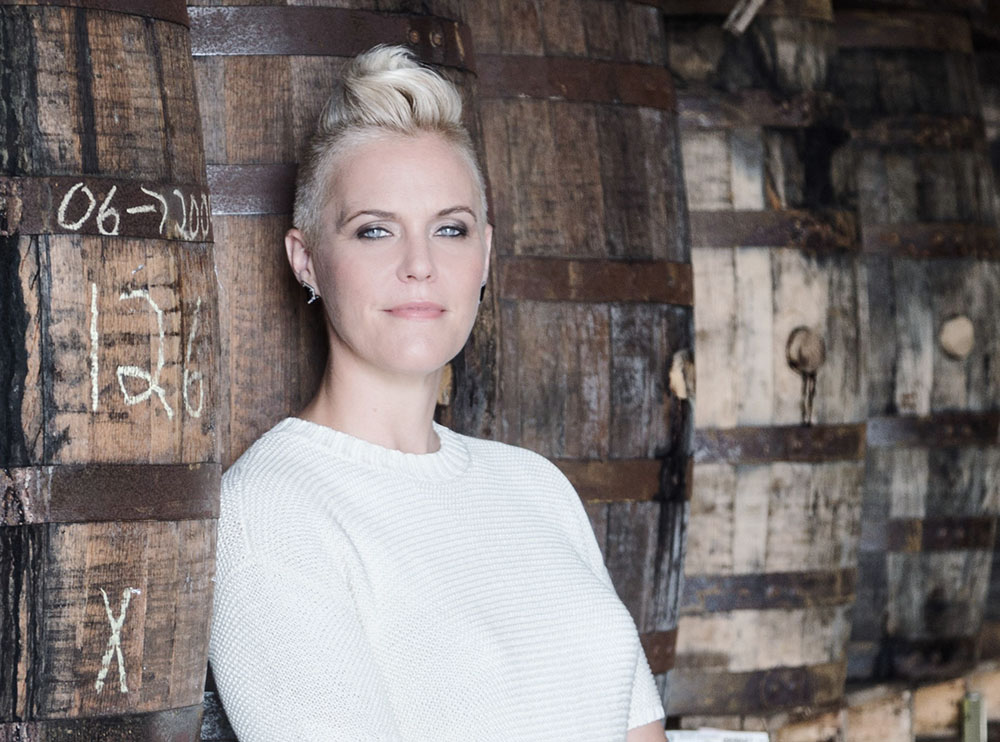
Between tiki, tropical blender drinks and the many yo-ho-ho jokes on #TalkLikeAPirate day, rum is almost certainly the most fun spirit. Generally speaking, that’s a good thing, since it makes it approachable. The flip side of all that fun, though, is that rum lacks a certain gravitas and, unlike whisky or cognac, it has an uphill battle when it wants to be taken seriously.
That might change, though, thanks to the efforts of a wide range of distillers trying to renovate rum’s image. One organization working overtime, for example, is the West Indies Rum and Spirit Producers’ Association, which has a program called the Authentic Caribbean Rum (ACR) “Marque” — a designation that tells the consumer that the spirit in question has been produced in accordance with all the regional standards. It’s a little like a DOC in wine, in that it ties region and production methods together, although it has a wide area, with members in Barbados, Belize, Haiti, St. Lucia, Jamaica and the Dominican Republic, as well as a half-dozen other countries. Noticeably absent, however, is Puerto Rico, which is home to Bacardi, the biggest rum producer in the world. I decided I should head to San Juan to find out why it’s sitting this one out.
Of course, if you’ve given much thought to Puerto Rico lately, it’s probably because you’ve followed the destructive path of Maria, the monster hurricane responsible for an estimated five thousand fatalities and severe hardships for almost every single one of the over three million inhabitants who saw their homes levelled and the economy stalled while enduring months of power outages.
When I visited — seven months after Maria — a few areas still hadn’t had power restored. The last neighbourhood in San Juan, the capital, had only been fixed two weeks earlier. Despite that, in Old San Juan and Condado Beach, where most tourists wind up, everything is open for business, including my top two attractions, namely, Barrachina (a bustling tourist trap that claims to be the birthplace of the Piña Colada) and La Factoria, an impossibly cool Old Town bar that has been named to The World’s 50 Best Bars list, thanks to its world-class craft cocktails.
Just west of San Juan, in the oceanside town of Cataño, is the Bacardi distillery. The massive plant was spared a lot of the worst of Maria, but it did suffer some damage. The carbon dioxide recovery plant is still not back up and running, and the plant lost a roof off a warehouse, plus about 150 trees. Across the island, the loss of trees — and foliage — was one of the most shocking things to many who witnessed the immediate aftermath of Maria, since the hurricane actually ripped just about every leaf off every tree on the island. It looked barren and bleak and had a startling effect.
“In my neighbourhood, this graffiti started appearing in a bunch of places after Maria, ‘detras de los arboles, vive mucha gente’,” says Casa Bacardi’s General Manager, Wesley Cullen. “It means ‘behind the trees live a lot of people’, and, after the hurricane, we couldn’t pretend we didn’t see them anymore.”
As Cullen was telling me this, several other Bacardi workers started nodding, confirming the importance of the slogan. It wasn’t really about the foliage, which has grown back, or the trees, which can be re-planted, but, rather, about the people who lived in poverty in the hills. Maria exposed a lot of deep-rooted, hidden social and political problems in Puerto Rico, which were suddenly much harder to ignore.
In the aftermath, both Bacardi and Don Q (the other big distiller on the island) were major players in emergency response efforts. Bacardi turned a warehouse into a shelter where people could also access food, clean water and medical treatment. In Ponce, on the other side of the island, Don Q converted a hotel it owned into a meal-delivery headquarters and, as it became clear that the tourist trade was not coming back any time soon, established a placement program to help the island’s unemployed service industry workers, using its vast network to get them jobs in the United States.
Long term, though, Maria has been something of a wake-up call to Puerto Ricans, including its distilleries, which are now re-doubling their efforts at sustainability, community and transparency. While I was there, Cullen showed me where the trees that once protected the edge of the property from coastal erosion used to be and how they’re going to try to improve on that by working with plant specialists to transform the area into a certified conservation site.
Some of this good citizenship was already in the works before Maria. Bacardi, for example, got its first wake-up call 10 years earlier, when it was fined by the Environmental Protection Agency for water pollution. Since then, it’s been working to clean up its practices and image, with its extraordinarily successful #NoStraw campaign, aimed at reducing plastic use in bars.
The new move towards transparency can arguably be seen in its rum, too, with this year’s launch of Cuatro and Diez, new aged rums with clear labels that spell out exactly when these four- and 10-year old rums were put in the barrel. Since the 10-year-old is already well received, with many fans appreciating its coffee and cigar qualities, Bacardi hopes others will follow and that its classification system — roughly modelled after tequila’s blanco, reposado and añejo — will be adopted by rum producers around the world who want to join in the transparency movement.
This new system comes mainly in reaction to the solera aging system, a controversial Latin American rum-blending practice that many rum geeks consider to be a cheat, since the number on the label of a solera bottle refers to the oldest rum in the blend, not the youngest. Consumers see a big “21” on the label and assume it’s 21-year-old rum, but, in any one bottle, there might only be a few drops of rum that was actually distilled back in the 1990s.

“This graffiti started appearing … after Maria, ‘detras de los arboles, vive mucha gente’. It means ‘behind the trees live a lot of people’, and, after the hurricane, we couldn’t pretend we didn’t see them anymore.”
Some, though, defend solera as a traditional method adapted from the Spanish sherry industry, which is especially important to Puerto Rican rum since the island’s colonists largely came from Andalucía, where sherry is made. Jaiker Soto Bravo, for example, the master blender at Destileria Serrallés (where Don Q is made), defends the practice with one caveat, namely, it must be used responsibly and in the spirit of the aging process in Spain’s sherry triangle.
“[Solera] was created in Spain for sherry and we use the same arrangement with the levels as they do in Jerez but adapted for the rum,” says Bravo, who is referring to the practice of stacking barrels three or four rows high and rotating fractions of liquid between barrels. “So, when I need to formulate my Gran Añejo premium, I need to remove rum from the solera level (the lowest) and this volume is replaced with some from the row above. And the top row of barrels is filled with aged rum.”
In addition to using well-aged rum at the outset of the solera — and not new-make spirit — Bravo doesn’t drain the whole barrel, but follows the Spanish method of only moving a fraction of the liquid down to the next row of barrels. He’s frank about the fact that he uses this process to speed up the aging and points out that’s an important thing in a tropical country where the Angel’s Share can be up around eight percent in the first couple of years.
The Don Q method is quite different from the alleged practices of some distilleries in Central and South America, where many industry experts suspect that low-quality, new-make spirit is being blended with tiny amounts of aged rum. After that, blenders add in boatloads of sugar and caramel colour to disguise the roughness of the new-make. And, because there are no nutritional labels on liquor bottles in Canada and the United States, consumers generally have no idea that there’s any added sugar in some spirits, let alone how much.
Fortunately, we have the Internet. And Scandinavian state alcohol stores publish the results of their lab tests, including sugar levels, which in some cases, is shocking. Many premium rums contain between 20 and 30 grams per litre. At least one rum available in Denmark contains almost 100 g/l. You can do your own rum research on Finland’s Alko and Sweden’s Systembolaget websites or at www.drecon.dk, a site maintained by a rum enthusiast in Denmark.
Don Q doesn’t add any sugar — ever. And the results are spectacular in the premium expressions, which are dry and elegant, with notes of vanilla, spice, butterscotch and chocolate derived from time spent in American oak — the same way a whisky develops character in the aging process. Over at Bacardi, though, they do. They’re open about their “dosage” practice, which master blender José Gómez says is minimal (under 10 g/l in the new aged Cuatro and Diez) and defends as a tradition similar to Cognac making, where a little sugar is often added to brandy to ensure flavour consistency.
To sum up then, on this one island alone, the two largest distilleries have wildly different ideas about what defines a traditional Puerto Rican rum — and which practices need to be stopped. It’s hard to imagine this feud being resolved any time soon, on this island, or, indeed, in the worldwide category, which is populated with untold regional differences and many distillers working to establish universal standards so that the premium expressions will finally be taken seriously.
While we wait for that to happen, those of us who already understand the beauty of a well-aged, dry rum likely have no choice but to get to know the lay of the land, the regional differences, how to navigate Scandinavian liquor board websites and how to carefully read labels.
Doing so might not sound as much fun as a Piña Colada, but rum education has its own rewards. Seriously.
